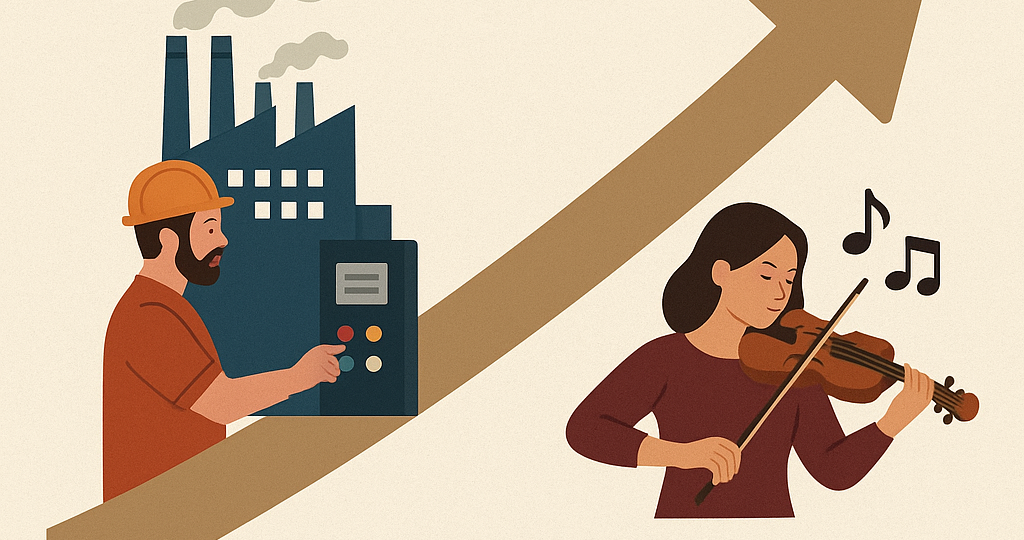
Have you ever wondered why college tuition keeps climbing, healthcare bills grow bigger, and concert tickets cost a small fortune—even though these experiences don’t necessarily feel any fancier than they did years ago? It’s not just inflation or greed. It’s something economists call Baumol’s Cost Disease, and once you understand it, a lot of modern price puzzles start to make sense.
The idea was first introduced in the 1960s by economists William Baumol and William Bowen (I always wondered, at this point, why didn’t they call it the Williams’ Cost Disease. Why did they have to leave a guy out?). They noticed a strange trend: in industries like manufacturing, technology kept making workers more efficient. Machines, automation, and better processes meant factories could produce more goods for less money over time. But in fields like performing arts, education, and healthcare, productivity barely budged. After all, no matter how much technology we invent, a Beethoven string quartet still takes four musicians playing for about 30 minutes—there’s no “speeding it up” without losing the magic. Teaching a student or caring for a patient also requires the same basic amount of human attention as it did decades ago.
Here’s where the “disease” kicks in: even though a teacher or musician isn’t producing “more” in less time, they still need to be paid a competitive salary to keep up with rising wages elsewhere. If factory workers are making more money thanks to higher productivity, then teachers and nurses must also get paid more—even if their output (students taught, patients treated) hasn’t changed. Otherwise, no one would want those jobs! So their services get more expensive even though they aren’t producing more.
Baumol’s Cost Disease explains a lot about today’s economy. It’s why sectors like healthcare, education, childcare, and the arts keep becoming relatively more costly compared to things like electronics or cars, which have gotten cheaper and better. It’s not because those service sectors are “wasting money”—it’s simply because human-centered work doesn’t scale up like machines do. Understanding this hidden economic force helps us rethink how we value essential professions that rely on the irreplaceable human touch.
RELATED POSTS
View all


